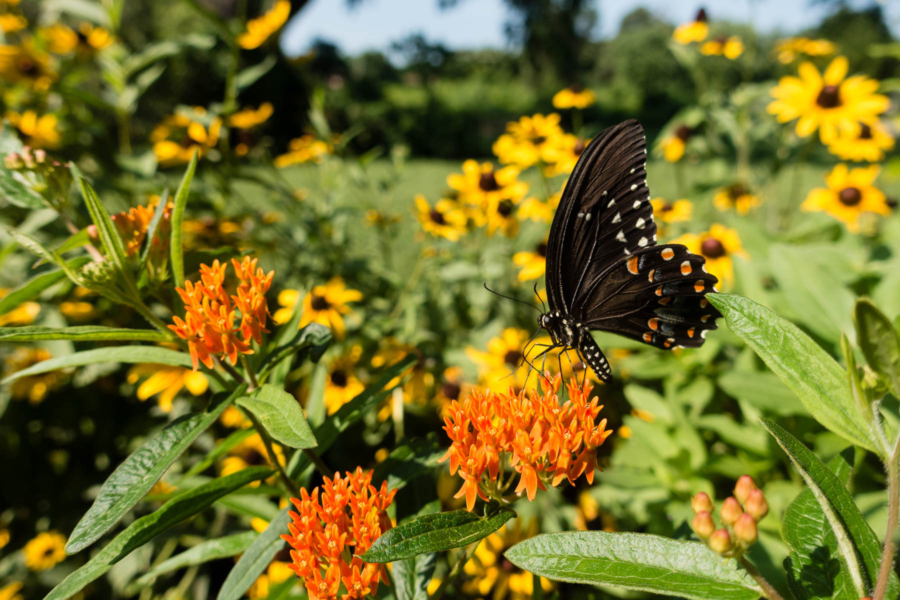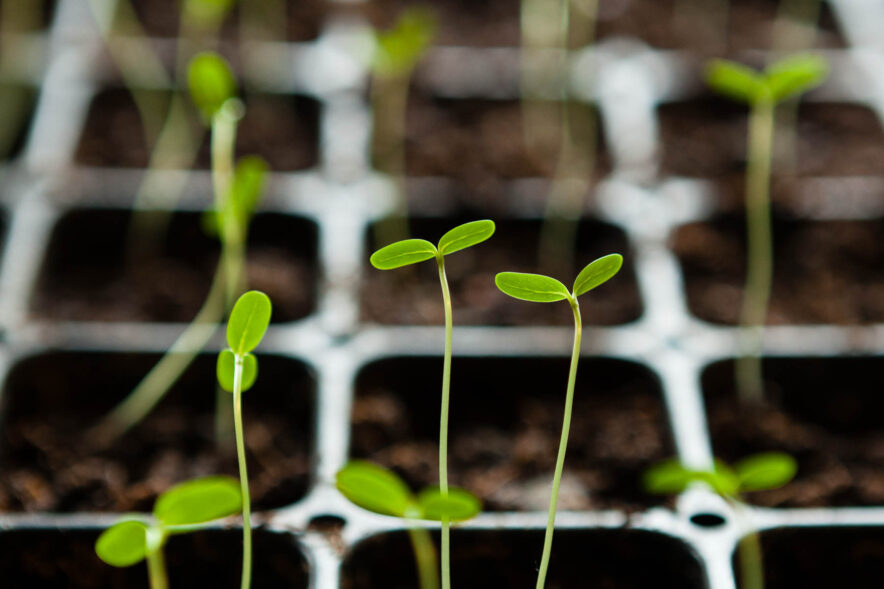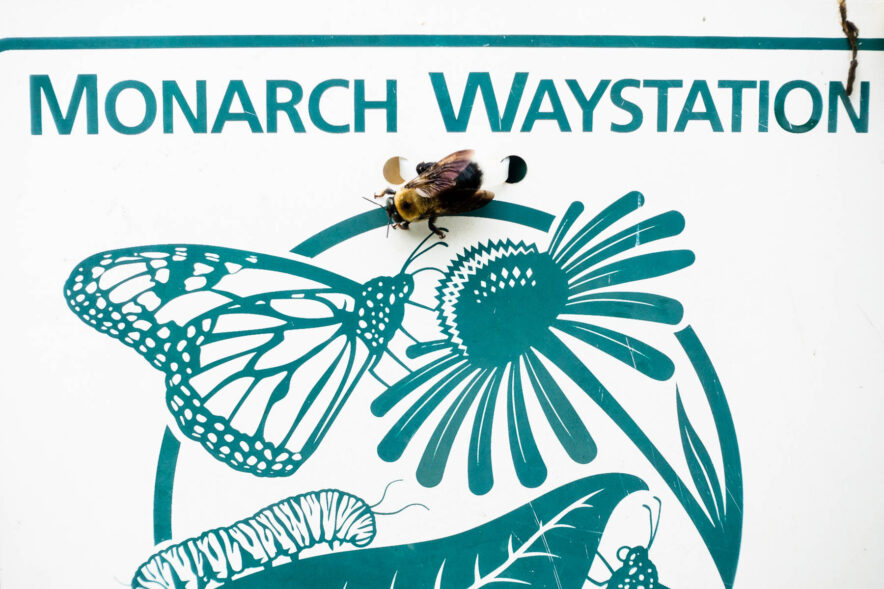Certify your backyard habitat
Habitat certification programs celebrate the unique ways your property is helping the environment

You’ve spent countless hours transforming your backyard into a thriving habitat for birds, pollinators and other wildlife—now it’s time to make it official! Backyard habitat certification programs recognize gardeners like you for creating eco-friendly landscapes that support biodiversity. Below are 10 certification programs—four nationwide and six local to the Chesapeake Bay watershed—that you can apply to or work towards.
National Wildlife Federation’s Backyard Habitat Certification Program
This nationwide program was designed to combat habitat loss with new habitat from homeowners, schools, offices, churches, neighborhoods and state-owned properties. The requirements for certification include three natural food sources for wildlife, one source of clean water, two sources of shelter from weather and predators, two places for wildlife to raise their young, and the use of two sustainable practices such as water conservation and reducing pollution. The National Wildlife Federation provides a checklist, native plant database and resource library to help property owners prepare for certification. Certification costs $25 and signs can be purchased after a property is certified. For larger spaces, the National Wildlife Federation encourages ecological landscape design practices.
Homegrown National Park
The Homegrown National Park initiative was started by the organization’s founder, Doug Tallamy, as a way to increase biodiversity. The program asks landowners to remove invasives, plant natives and add their property to a biodiversity map used by people across the globe. You can join the map before making changes to your property and add updates as you go. Homegrown National Park has a resource guide to help landowners get started. This program is designed to encourage a network of native plantings on private property.
Monarch Watch: Monarch Waystations
This certification program is designed for gardens that create food and habitat for monarch butterflies. The application requires that a property have at least one host plant, at least one nectar plant and one perennial, while using sustainable management practices and having the necessary plant density for shelter. Properties that pass the application will be included in the Monarch Waystation Registry where nearly 50,000 habitats have been registered. Homeowners will also be eligible to purchase a sign showing that they have a registered Monarch Waystation habitat. The application costs $18 and a sign can be purchased after the garden is certified.
North American Butterfly Association Butterfly Garden Certification
The North American Butterfly Association (NABA) certifies gardens that meet standards for providing food and habitat for butterflies. Applicants must have a minimum of three species of caterpillar food plants, three species of butterfly nectar sources and one milkweed plant. Although it is not a requirement, the NABA encourages gardeners to plant more than one plant of each species. They also ask that gardeners avoid pesticides, which can harm butterflies and other insects. Gardeners that pass the application will receive a certificate and are eligible to purchase a sign to place in their garden. The application costs $15. The NABA Butterfly Garden Certification has been given to 10,500 butterfly gardens to date.


Penn State Extension Master Gardener Pollinator Habitat Certification
The Pollinator Habitat Certification from Penn State prioritizes gardens that provide habitat and food for wildlife. The program requires the property to have at least four species of native, pollinator-friendly trees and shrubs. It also needs to include at least three species of pollen and nectar sources for spring, summer and fall with a minimum of five plants per species. The plants must be in place for at least one year before they can be included in the certification application. Out of these plants, three need to be a caterpillar host plant. The garden must provide water, shelter, nesting sites and food for wildlife. The landowner should remove invasive species, eliminate the use of pesticides and wait to clean up the garden until spring. Successful applicants will receive a certificate and the option to purchase a yard sign. The application costs $10.
Northern Virginia Bird Alliance Wildlife Sanctuary Program
This program focuses on implementing and monitoring landscape management practices that benefit wildlife. The program is available in the city of Alexandria and the counties of Fairfax, Loudoun, Prince William, Fauquier and Rappahannock. The application requires landowners to plant native trees, shrubs and vines, provide multiple habitat features, adopt two best practices such as reducing pesticides and conserving water, and actively reduce invasive species. Additionally, landowners must monitor the property and track at least 10 of 42 possible Sanctuary Species using the wildlife sanctuary before completing the application. Volunteer Wildlife Sanctuary Program Ambassadors are available to visit the property and provide advice on what changes can be made to receive certification. A site visit will be necessary for certification after the application has been completed. Properties that pass the application will receive a certification letter with the option to buy a sign.
West Virginia Wild Yards
The West Virginia Wild Yards Program started in 1998, and now more than 400 landowners have participated in the program. This program requires that landowners provide food, water, shelter and a place for wildlife to raise their young. The property must have three species of plants with three different blossom shapes, colors and flowering periods that cover spring to fall. The West Virginia Department of Environmental Protection Native Plant Selection Tool can help homeowners pick plants native to the area and the West Virginia Wild Yards Manual can provide additional information about building a habitat-friendly yard.

New York Bee Sanctuary BEE-SAFE Certification
The BEE-SAFE certification promotes practices that benefit native bees. This program is open to individuals, public institutions and corporations. The requirements for individuals include the use of flowering plants, especially native plants. The certification emphasizes eliminating the use of synthetic fertilizers, genetically modified organisms (GMOs), pesticides, herbicides and fungicides. If possible, it is recommended that the garden be at least 10 to 20 square feet, but all garden sizes are eligible for certification.
Home Garden Pollen-Aider Certification in Harford County, Maryland
The Pollen-Aider Certification Program focuses on providing pollinator habitat throughout Harford County, Maryland. The program requires that the property have a diversity of plants that provide pollen and nectar, with a minimum of three plants, shrubs, trees or vines that flower from spring to fall. There must be plants that provide food for butterfly and moth larvae. The property must have a water source such as a bird bath, puddling area or stream and it must have overwintering habitat such as a rock pile or garden debris. Property owners must also avoid pesticides and use a minimum of five conservation practices. Applications must be approved by a Pollen-Aider, a Harford County Master Gardener. Approved gardens will receive a certification sign. Publicly accessible gardens such as those owned by businesses, government agencies, schools and civic institutions can list their approved garden on the Harford County Pollinator Gardens Trail.
Howard County, Maryland Bee City USA Registration
Over 400 species of bees live in Maryland and this program is working to create more bee-friendly properties in Howard County. Specifically, the program focuses on creating habitat for native solitary nesting bees but the practices are beneficial for all bees and other pollinators. Howard County is an official Bee City which means the city provides educational programs about native pollinators, expands bee habitat and uses integrated pest management practices. The program accepts listings from habitats that are less than 30 square feet up to over 10 acres. Habitats listed should have a majority of plants that are native to the region and no invasive species. A diversity of plants that provide pollen and nectar should be available on the property. The property should also include plants that provide nesting sites, materials and cover. The program encourages the planting of “pollinator powerhouse” perennials and trees such as milkweed, aster, redbud and oak. A list of “pollinator powerhouse” species is available in the application.
Is your backyard habitat certified by these programs or any others? Let us know in the comments!

Comments
There are no comments.
Thank you!
Your comment has been received. Before it can be published, the comment will be reviewed by our team to ensure it adheres with our rules of engagement.
Back to recent stories